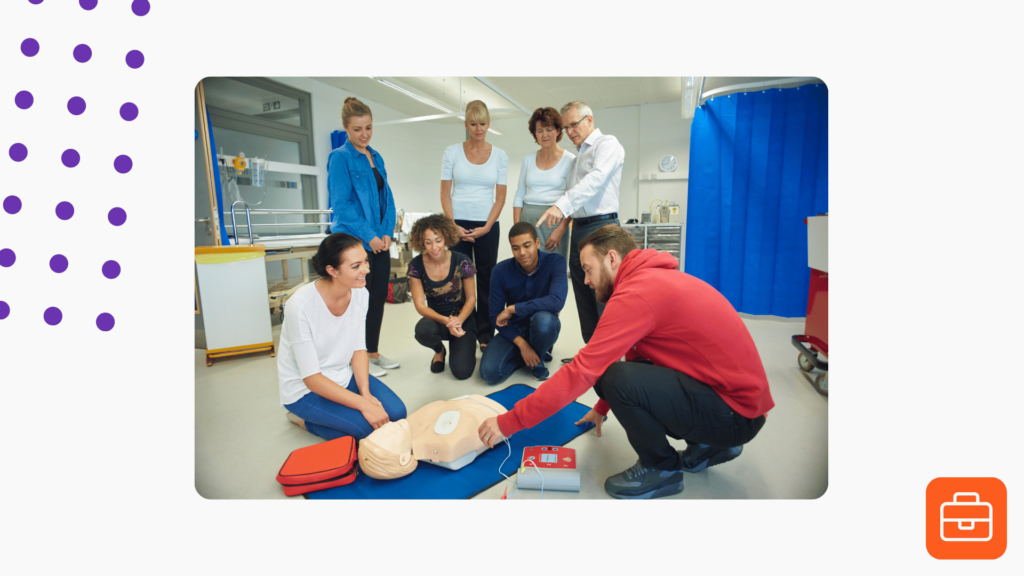Procedures for training new employees
Training is the first experience most employees go through when they first start their jobs. If you don’t have a good process in place, you can easily waste time and make it harder for workers to excel in their roles. That’s why implementing specific procedures for training new employees is a great way to boost engagement and reduce turnover.
The value of training procedures
The purpose of having specific procedures in place is so you can standardize your training process. If you don’t have a standard approach, it can be hard to find gaps or issues. This is especially true of training, where workers need the same information to be able to do their jobs effectively.
Creating specific procedures will help your team to:
- Create a more consistent training experience for new employees.
- Reduce the likelihood of administrative errors.
- Instill more confidence in new employees and set them up for success.
- Make it easier to track and document training compliance.
- Decrease the amount of time it takes to conduct training.
Both new employees and trainers will benefit from a standardized process. So, it’s important that you develop a set of steps that best aligns with your site specifically.
Considerations for new employees
Training brand new employees is quite a bit more involved than other types of training. First, there’s a lot more content to cover which can wear people out. Second, you don’t have the same rapport with new hires as you do with veterans. And third, it’s the people you’re training may have no foundational knowledge of content.
All these factors can make it harder to keep new employees engaged throughout the training process. So, your training procedures should account for these variables and incorporate engagement activities on top of the course content.
Components to include
Until you’ve established the topics you’re going to cover and the content you’re going to use, don’t worry about anything else. The top priority is always to make sure everyone completes their regulatory training requirements. Once you’ve covered that, you can start to think about other elements of your training program.
Here are some procedures you might want to include in your plan:
- Training content file management
- Employee engagement exercises
- Documentation and reporting of new employee training
- Special onboarding activities, perks, etc.
- Mentorship programs
- Training for class instructors
Incorporating these extra elements into your training procedures may help improve the experience for both new employees and instructors. Just make sure that you have the bandwidth to sustain the more “fun but unnecessary” initiatives long-term. And if any procedure takes away from your ability to deliver high-quality training, scrap it.
Never stop improving
You’ll never stop training new employees, so you should never stop finding ways to improve your approach. Many programs start off on the right foot. They’re engaging and effective, and everyone seems to benefit from the intention behind the process. But over time, training programs tend to stagnate and become less effective.
Some ways you can continuously improve include:
- Getting feedback from new hires
- Rotating out your instructors
- Developing new course materials
- Performing routine training audits
Overall, the quality of your new employe training procedures can have a big impact on how your workers perform. By providing them with the tools and knowledge they need to excel, you’re communicating how much you care about their growth and development. Over time, these positive impacts will compound and allow your team to reach new levels of success.




